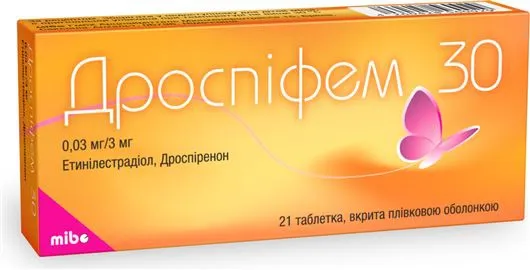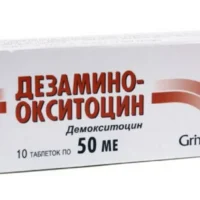Description
Drospifem 30 (ethinylestradiol, drospirenone) Coated Tablets 0.03 mg/3 mg. №21
Ingredients
Drospifem 30 contains ethinylestradiol and drospirenone as active ingredients. These tablets also include inactive ingredients such as lactose, corn starch, talc, and magnesium stearate.
Dosage
Drospifem 30 tablets are to be taken orally once daily at the same time each day. Each pack contains 21 coated tablets. Follow the instructions provided by your healthcare provider for the most effective results.
Indications
Drospifem 30 is indicated for the prevention of pregnancy. It is also used to treat symptoms of premenstrual dysphoric disorder (PMDD) and moderate acne in women.
Contraindications
Drospifem 30 should not be used by pregnant women, women with a history of blood clots, or those with certain types of cancer. It is important to discuss any existing medical conditions with your healthcare provider before starting this medication.
Directions
Take Drospifem 30 tablets exactly as prescribed by your doctor. Do not skip doses and take the medication at the same time each day. If you miss a dose, refer to the package insert for instructions or consult your healthcare provider.
Scientific Evidence
Studies have shown that the combination of ethinylestradiol and drospirenone in Drospifem 30 tablets effectively prevents pregnancy with a low risk of side effects. Research has also demonstrated the efficacy of drospirenone in reducing symptoms of PMDD and acne in women.
Additional Information
It is important to note that Drospifem 30 does not protect against sexually transmitted infections (STIs). Contact your healthcare provider if you experience severe side effects or have any concerns about the medication.
Pharmacological Effects: Ethinylestradiol and drospirenone work together to prevent ovulation, thicken cervical mucus, and alter the endometrium, making it harder for sperm to reach the uterus. Drospirenone also has anti-androgenic properties, making it beneficial for conditions like acne.
Clinical Trials: Clinical trials have shown that Drospifem 30 is as effective as other combination oral contraceptives in preventing pregnancy while offering additional benefits such as improved skin condition in women with acne.





